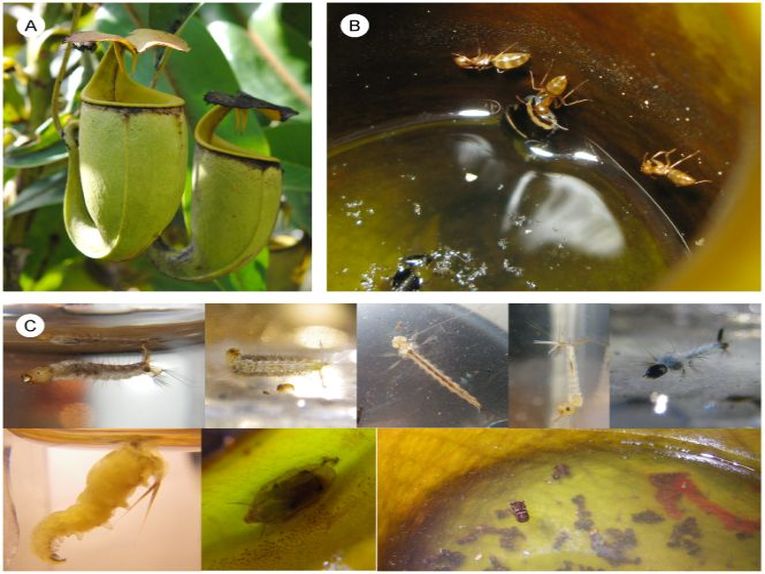When an intrepid predator and an insectivore team up against one of the most feared disease-spreading organisms, then we've got to investigate just how all of this collaboration works. From our last report exactly a year ago, science has unlocked the secrets of mutual survival.
Mutualism is normally simply the lichen or a crab and an anemone, but active hunting and diving ants risking life and limb for a pitcher plant seems just about the extreme from any stage of the natural environment. Mathias Scharmann, Daniel G. Thornham, T. Ulmar Grafe and Walter Federle Have produced a paper that probes many of the facets of this story that broke last year with the discovery of the "swimming" ants, consuming mosquito larvae. They've confirmed the mutualistic habit with the Camponotus schmitzi ant as an obligate, doomed to supply the plant no matter what. The benefits to the ant are multiple. The Brunei swamp in which the Nepenthes bicalcarata pitchers live is called the Badas peat swamp forest. The pitchers digest all insects who fall in while only this ant is specially adapted to walk on water and avoid slipping on the pitchers hairs., living in the hollow tendrils of the pitcher in "special housing."
The pitcher grows more slowly without any prey, so you would imagine the ant may be a competitor. In fact, the plant absorbs much more nutrient when supplied with ant "guests." As well as defaecating in the pitcher, ants are responsible for the removal of both larvae and pupae of the fly "infauna." This seems to be the reason that nitrogen isotopes can be measured in higher quantities in plants with ants.
Much of the nitrogen in the ants came from many different fly larvae which could be observed being caught and dragged to the water surface, then transferred to the ants' nest. When the researchers tested the ants' behaviour towards the Culicid mosquito pupae, the numbers were significantly reduced within a day. I think larvae were more difficult to catch, numbers were very much reduced where ants were resident. Other flies fared badly too reducing the loss of nitrogen from the plant in the flies' bodies.
The fitness of plants with ants was much higher, with more frequent pitcher production. Cause and effect here were difficult to work out but the mutualism was evident. Unlike some insectivorous plants, Nepenthes can absorb nitrogen from their roots. Experiments showed that almost all of these plants absorbed isotopic 15N from the insect prey, however. The authors rest their case, along with some neat video excerpts, with their paper, published in PLoS ONE. They hail from the Universities of WÃ ¼rzburg, Cambridge, Glamorgan and Brunei Darussalam.










